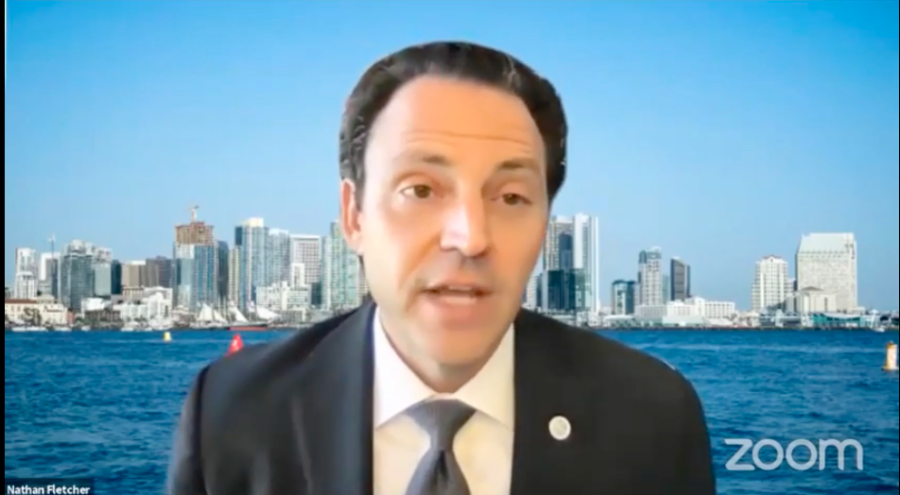Examining the issue of chronic homelessness in San Diego and the policies being implemented regarding future housing plans.
Homelessness is a sad reality of the U.S. today that deserves significant attention. California alone holds a fifth of the nation’s homeless population, according to Mother Jones Magazine, and San Diego County itself is ranked in the top five cities in the U.S. for having the most homeless people, says the Voice of San Diego. Homelessness is not only current, it’s an important, pressing issue that affects our locals, and it’s time that we asked what our city is doing for our fellow citizens.
Before discussing homelessness, it is important to debunk the myths first. One widely spread idea is that homelessness is a long-term condition. According to a researcher at the University of Pennsylvania, the most common duration of homelessness is only one or two days. This is because the majority of homeless individuals — 85 percent — according to Mother Jones Magazine, are only in the situation temporarily. Temporary homelessness is defined as individuals who are only homeless for a few weeks or months. People in this category can often get off the streets with a little help. On the other hand, chronic homelessness is when an individual has been on the streets for at least a year or lives off and on the streets for many years. The people in this latter category typically also have another issue, as well, that keeps them on the streets, such as mental illness, physical disabilities or substance abuse. These conditions normally lead to job instability, making it hard for individuals to earn a wage to pay for housing.
Individuals with chronic homelessness should receive the most assistance. For many people lacking help, getting off the streets permanently is simply not possible. Without support, their lifestyle is also costly for the government. The chronically homeless repeatedly spend a lot of time in shelters, emergency rooms and jails, costing between $30,000 and $50,000 per person annually, according to the Interagency Council on Homelessness. The La Jolla Light reported that, in 2014, the number of chronically homeless in San Diego County was 1,156 individuals. For reference, 25 of those were recorded in La Jolla. Instead of financing the effects of homelessness, the government should be addressing the causes.
In the past, San Diego has won acclaim for its Serial Inebriate Program, which combats homelessness. SIP targets people with substance abuse problems who are living on the streets. If they have been checked into sobering services more than four times in a 12-month period, they are arrested for public intoxication. Those arrested were offered a choice: go to jail or join the SIP. After being accepted into the SIP, individuals underwent substance abuse treatment for six months. This program is a “linear residential treatment model,” in which housing is dependent on the condition that individuals finish the program. In San Diego, the SIP resulted in a 54-percent reduction in emergency room visits among the homeless population.
It’s great that San Diego has a program using a linear residential model that works. But in the past, this model often failed because relatively few chronically homeless people ever completed the work required to get housing, and any relapse could cause them to lose their housing again. And the SIP targets only the portion of San Diego’s chronically homeless with substance abuse issues. What about those with mental illness or disabilities, two categories that include a lot of San Diego’s homeless veterans?
Well, there is another program in San Diego called People Assisting the Homeless. Started two years ago, PATH is a program using the “housing-first model” geared specifically toward getting veterans back on their feet, according to ABC 10 News. “Housing first” embraces the idea that an individual is first provided housing unconditionally then offered all other services and programs for support. This model is not only successful at getting individuals off the streets, but it is cost-effective. When “housing first” was adopted in Utah, the program averaged $11,000 per person, about half the $20,000 per person it costs for shelters, emergency visits and jails. This demonstrates that it is possible to both help people and reduce expenses.
Economically, these changes are a definite improvement. But they are also an improvement in terms of the treatment of San Diego’s citizens. The housing-first model embraces the idea that housing is a basic human right, not a privilege. In the linear residential treatment model, participants are not treated with the respect and compassion that are afforded by basic moral standards. It is demanded that they improve their lifestyles first before they are given the privilege of housing. By offering individuals housing first, they are treated as humans, regardless of their condition. In the end, this is what the conversation about homelessness should focus on: not what is the most cost-efficient option or what makes our cities look the best but, rather, what is the most compassionate, simple thing to do for our fellow citizens — the homeless.











